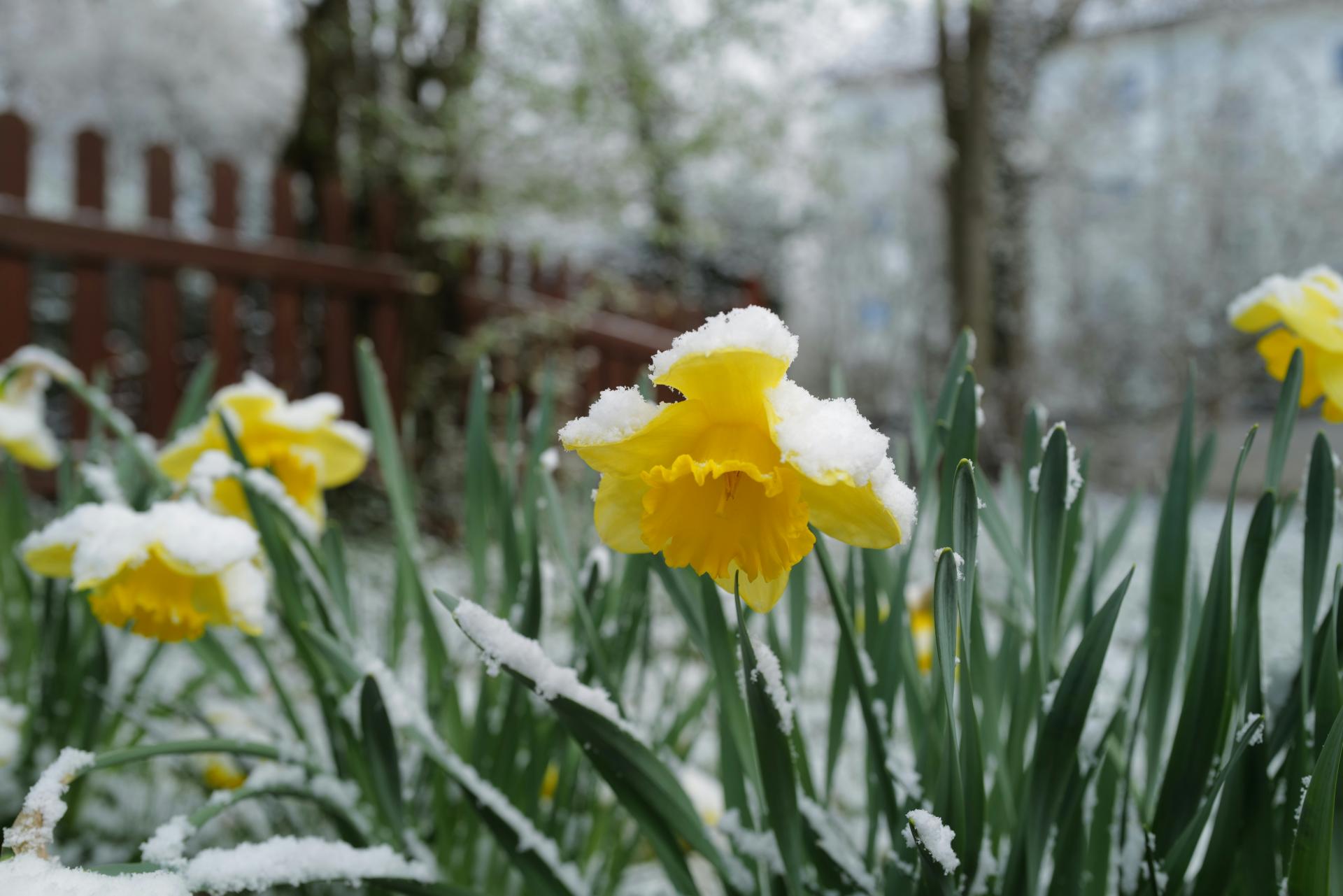You are here
Be A Better Gardener: The Benefits of Snow
Be A Better Gardener: The Benefits of Snow
by Thomas Christopher
I grumbled last winter when the snow started falling on our glacial hilltop in western Massachusetts. My wife Suzanne has somehow hung onto a child’s appreciation of the beauty of newly fallen snow and the adventures it can provide. Over decades of shoveling, though, I had come to regard snow as mainly an inconvenience. But then I read a 2012 post on Kim Eierman’s “Ecoblog” (https://www.ecobeneficial.com/), titled “Benefits of a Blanket of Snow in Your Garden.”
2012 was the year that Kim founded her company, EcoBeneficial LLC. Since childhood, she says, she’d been a “nature nerd,” and when work had taken her to New York’s suburbs she coped with a personal program to recreate nature in her back yard. Kim combined studies of horticulture with studies of native plants at such venues as the New York Botanical Garden, and before long had moved into applying what she learned in designing “eco-beneficial” gardens for clients and teaching at institutions such as the New York Botanical Garden, the Brooklyn Botanic Garden, and The Native Plant Center in Valhalla, NY. Now, she gives talks about ecological gardening all over the country, and in 2020 published an award-winning book, The Pollinator Victory Garden.
When I called Kim a few weeks ago, her only complaint about snow was that there hadn’t been enough this winter. Then she elaborated on the benefits she had outlined in her blog post.
The first of these benefits is snow’s somewhat counter-intuitive value as insulation. A layer of snow can be quite effective in that respect, although the degree of insulation the snow provides depends on its texture. Dry, fluffy snow is full of air spaces that provide better insulation than wet, dense snow, and the deeper the layer the higher the R-Value. According to Kim, the temperature under a good snowpack may be as much as twice the ambient temperature above the snow.
This is important for several reasons. Not only is protection from intense cold beneficial for over-wintering perennial plants the snow’s insulation also moderates the quick temperature swings that are typical of our Northeastern winters. Rapid shifts from freeze to thaw can damage otherwise cold hardy plants and because the water in the soil expands as it freezes only to shrink again as it melts, such temperature swings can push plants out of the soil in a process called frost-heaving.
Midwinter thaws can also lure plants out of dormancy, causing plants to start growing prematurely. This leaves them vulnerable when cold weather returns. In addition, the deep penetration of frost into soil that isn’t protected by snow during cold spells, makes it harder for tree and shrub roots to absorb the water these plants need to replace moisture extracted from their upper growth by dry winter winds.
As Kim also pointed out, there’s good reason why snow was traditionally called “poor man’s fertilizer.” The nutrient needed in the greatest bulk for plants is nitrogen. While that would seem to be available in abundance as our atmosphere is 78% gaseous nitrogen (N2), that is not a form of nitrogen that most plants can absorb and use. As lightning bolts pass through the atmosphere, though, the massive amount of energy they release transforms N2 nitrogen into so-called nitrates, nitrogen combined with oxygen, which plants can utilize. This, along with nitrates released into the atmosphere by the burning of fossil fuels, is absorbed by snowflakes and raindrops as they fall, depositing as much as 2 to 12 pounds of nitrates per acre in the average year. Most of the nitrates deposited by rain wash away in the surface run-off, but those in snow, because it releases moisture gradually as it melts, is likely to be absorbed into the soil.
A final benefit of a good snowfall, according to Kim, is how it helps plant seeds break dormancy and germinate. Many types of seeds, especially those of native plants, require a period of exposure to a combination of moisture and cold before they will sprout. Snow is ideal for conditioning seeds this way, and as it melts, the water it releases helps to gently wash the seeds down into the soil, which improves their chances of successful growth. April showers may indeed bring May flowers, but often only after a cold, moist, ideally snowy winter.
To listen to the rest of my conversation with Kim Eierman and her other observations about snow, log onto the Berkshire Botanical Garden’s “Growing Greener” podcast at https://www.berkshirebotanical.org/GrowingGreener.
Be-a-Better-Gardener is a community service of Berkshire Botanical Garden, located in Stockbridge, Mass. Its mission, to provide knowledge of gardening and the environment through a diverse range of classes and programs, informs and inspires thousands of students and visitors each year. Thomas Christopher is a volunteer at Berkshire Botanical Garden and is the author or co-author of more than a dozen books, including Nature into Art and The Gardens of Wave Hill (Timber Press, 2019). He is the 2021 Garden Club of America's National Medalist for Literature, a distinction reserved to recognize those who have left a profound and lasting impact on issues that are most important to the GCA. Christopher’s companion broadcast to this column, Growing Greener, streams on WESUFM.org, Pacifica Radio and NPR and is available at berkshirebotanical.org/growinggreener
Help Our Garden Grow!
Your donation helps us to educate and inspire visitors of all ages on the art and science of gardening and the preservation of our environment.
All donations are 100 percent tax deductible.


